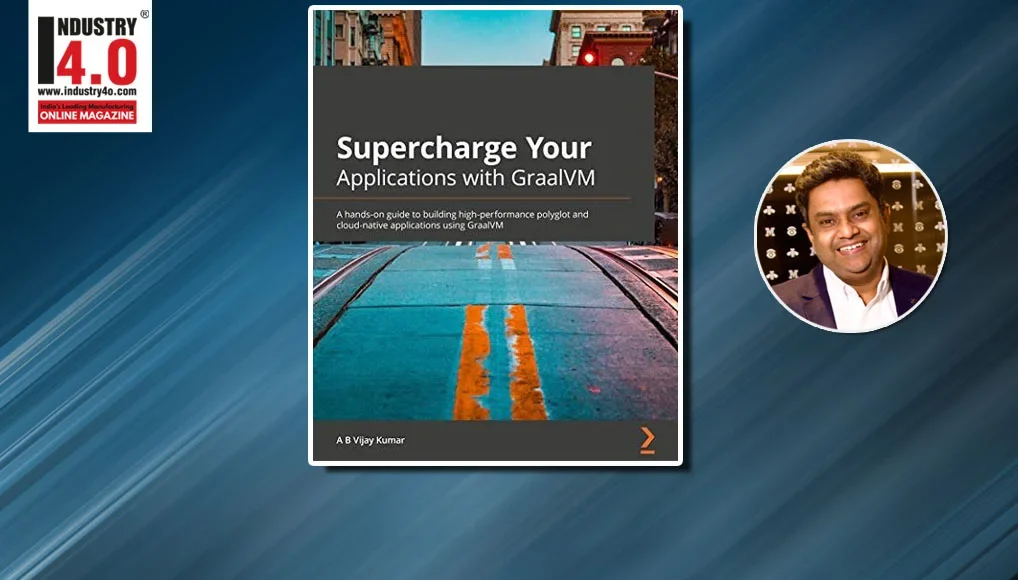About the Book “Supercharge Your Applications with GraalVM”
Before I explain what is gone into this book, let me introduce GraalVM.
Here are some blogs on GraalVM, I had published before.
Episode 1: “The Evolution” — Java JIT Hotspot & C2 compilers
Episode 2: “The Holy Grail” — GraalVM
In this blog, I will talk about how GraalVM embraces polyglot, providing interoperability between various programming languages. I will then cover how it extends from Hotspot, and provides faster execution, and smaller footprints with “Ahead-of-time” compilations & other optimisations.
 Java Serverless on Steroids with fn+GraalVM Hands-On
Java Serverless on Steroids with fn+GraalVM Hands-On
This blogs provides a hands on example of how to build a serverless application using fn project and run it on GraalVM.
GraalVM is a universal virtual machine that allows programmers to embed, compile, interoperate, and run applications written in JVM languages such as Java, Kotlin, and Groovy; non-JVM languages such as JavaScript, Python, WebAssembly, Ruby, and R; and LLVM languages C and C++.
GraalVM provides an Graal Just-in time (JIT) compiler, an implementation of JVMCI (Java Virtual Machine Compiler Interface), which is completely built on Java and uses Java Just in Time compiler (C2 compiler) optimization techniques as the baseline and builds on top of it. Graal JIT is much more sophisticated than Java C2 JIT compiler. GraalVM is a drop-in replacement with JDK, which means that all the applications that are currently running on JDK, should run on GraalVM without any application code changes.
GraalVM also provides Ahead-of time (AOT) compilation to build native image, with static linking. GraalVM AOT helps build native image, that have a very small footprint, faster startup and execution, which is ideal for the modern day microservices architectures.
While GraalVM is built on Java, it not only supports Java, but also enables polyglot development with JavaScript, Python, R, Ruby, C, and C++. It provides an extensible framework called Truffle, that allows any language to be built and run on the platform.
GraalVM is becoming a default runtime for running cloud native Java microservices. Soon, all Java developers will be using GraalVM to run their cloud native Java microservices. There are already a lot of Microservices Frameworks that are emerging in the market such as Quarkus, Micronaut, Spring native etc, that is built on GraalVM
Developers working with Java will be able to put their knowledge to work with this practical guide to GraalVM and Cloud Native Microservices Java Frameworks. The book provides a hands-on approach to implementation and associated methodologies that will have you up-and-running, and productive in no time. The book will provide step-by-step explanations of essential concepts with simple and easy to understand examples.
This book would be a hands-on guide for developers who wish to optimize their apps’ performance and are looking for solutions. We will start by giving a quick introduction to GraalVM architecture and how things work under the hood. Developers would quickly move on to build explore the performance benefits they can gain by running their Java applications on GraalVM. We’ll learn how to create native images and understand how AOT can improve application performance significantly. We’ll then move on to explore examples of building polyglot applications and explore the interoperability with between languages, running on the same VM. We’ll explore Truffle framework to implement our own languages to run optimally GraalVM. Finally, we’ll also learn how GraalVM is specifically beneficial in cloud-native and micro services development.
Who this book is for?
The primary audience would be Java developers looking to optimize their application’s performance. This book would also be useful to Java developers who are exploring options to develop polyglot applications by using tooling from the Python/R/Ruby/Node.js ecosystem. Since this book is for experienced developers/programmers, readers must be well-versed with basic software development concepts and should have decent knowledge writing java code.
What this book covers
Chapter 1, History of JVM
This chapter will walk through the evolution of JVM, and how it optimized the interpreter and compiler. It will walk through C1, C2 Compilers, the kind of code optimizations that the JVM performs to run Java programs faster.
Chapter 2, JIT, Hotspot and Graal
This chapter does a deep dive on how JIT compilers and Java Hotspot works and how it JVM optimizes the code at runtime.
Chapter 3, GraalVM Architecture
This chapter provides the architecture overview of Graal and the various architecture components. The chapter goes into details on how GraalVM works and how it provides a single VM for multiple language implementations. This chapter also covers the optimizations GraalVM brings on top of Standard JVM.
Chapter 4, Graal Compiler — Just in Time
This chapter talks about Just in Time compilation option of Graal VM. It will go through in detail about the various optimizations Graal Just in Time compiler performs. This is followed by a Hands-on tutorial to use various compiler options to optimize the execution.
Chapter 5, Graal Compiler — Ahead of Time
This chapter is a hands-on tutorial, that walks through how to build native images and optimize and run these images, with Profile Guided Optimization techniques.
Chapter 6, Truffle
This chapter introduces the Truffle Polyglot Interoperability capabilities and high-level framework components. This will also cover how data can be transferred between applications, that are written in different languages, that are running on GraalVM.
Chapter 7, Graal Polyglot (JavaScript and Node)
This section introduces the JavaScript and NodeJS. This is followed by a tutorial on how to use Polyglot API for interoperability JavaScript and NodeJS application.
Chapter 8, Graal Polyglot (Python, R and Java on Truffle)
This section introduces the Python, R and Java Truffle (Espresso). This is followed by a tutorial on how to use Polyglot API for interoperability between various languages.
Chapter 9, Graal Polyglot (LLVM, Ruby, WASM)
This section introduces the JavaScript and NodeJs. This is followed by a tutorial on how to use Polyglot API to interoperate between an example JavaScript and NodeJS application.
Chapter 10, Microservices and Serverless Architecture, Frameworks (Micronaut, Quarkus, fn Project) with Case Study
This chapter covers the modern MicroServices Architecture and how the new frameworks such as Quarkus and Micronaut implement Graal for most optimum Microservices architecture.
About the Author:

IBM Fellow | Master Inventor | CTO – Hybrid Cloud Management | Developer | Gamer | Music Producer | Author/Blogger
LinkedIn : abvijaykumar
Twitter : abvijaykumar
AB Vijay is an IBM Fellow and IBM Master Inventor, who has more than 58 patents filed in his name. He is the Global CTO of Hybrid Cloud Management and Platform Engineering Services. Hybrid Cloud Management is the largest unit in Hybrid Cloud Services and contributes to 40-50% of GBS revenue.
AB is responsible for providing the technology strategy and defining new offerings aligning to Hybrid Multi-Cloud & Edge ( such as AIOps, Platform Engineering Services, RISE with SAP, SaaS Managed Service offerings ). He is also responsible for bringing new-age engineering practices to Hybrid Cloud Management, such as Resiliency engineering, platform engineering, chaos engineering, quality engineering, etc).
He is responsible for defining the technology platform, tools and processes. He is responsible for providing the solution guidance, defining the new delivery methods, and supporting the Delivery organizations to scale to the new ways of working.
He works with IBM Research, IBM cloud and cognitive, Nord cloud, Taos, and other IBM units, to bring an integrated technology PoV and build differentiators.
He is a recognized as subject matter expert for his contribution to advanced mobility in automotive and has led several implementations involving complex industry solutions. He specializes in mobile, cloud, containers, automotive, sensor-based machine-to-machine, Internet of Things, and telematics technologies. He has won various prestigious awards including the IBM Corporate award, Best of IBM 2015 and 2019, Outstanding technical achievement award.
He has also received Invention Plateau Award Issued by IBM 15 Times.

He is a Member of IBM Academy of Technology
A B Vijayakumar’s Book is Available on:












